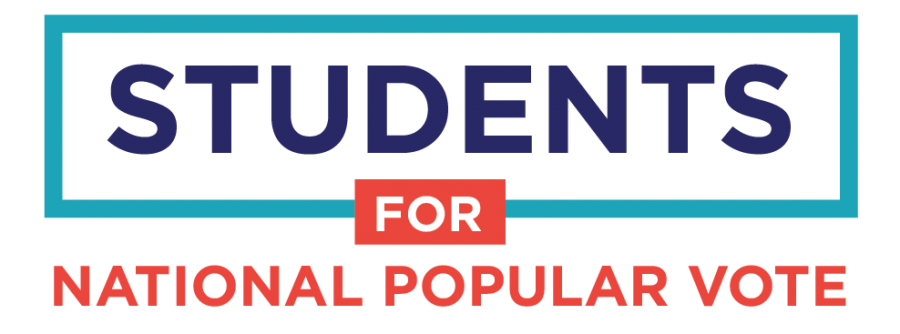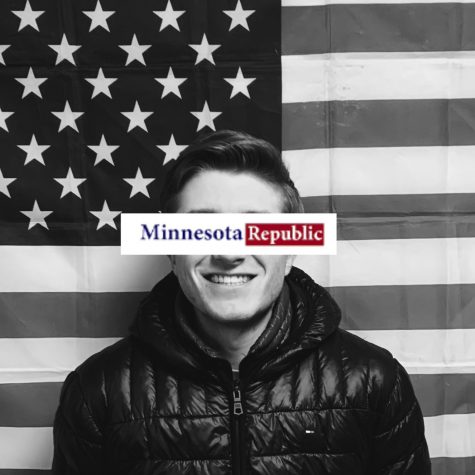National Popular Vote Aims to Make Every Voter Matter in Every Presidential Election
September 23, 2020
For a majority of University of Minnesota students, the upcoming 2020 Presidential Election will be the first time that they are of age to cast their vote for President of the United States. As first-time voters, college students may or may not fully understand how the presidential election process works and whether it is possible to change it. When members of the media, including recently CNN’s Don Lemon, make claims such as, “we’re going to have to blow up the entire system,” when referring to the Electoral College, it is as important as ever to understand the system and Constitutional ways to change it.
With an ongoing debate about whether the current way of electing the president is optimal, the notion of a national popular vote is often discussed. Right now, the National Popular Vote Interstate Compact is gaining traction across the country. According to the National Popular Vote website the bill would guarantee the presidency to the candidate who receives the most popular votes across all 50 states and the District of Columbia. As of now, it has been enacted into law in 16 jurisdictions (15 states plus the District of Columbia) with 196 electoral votes. The bill would go into effect when enacted by states totaling an additional 74 electoral votes.
Eileen Reavey is the National Grassroots Director for National Popular Vote. Reavey and National Popular Vote recently launched a “Students for National Popular Vote” initiative. The initiative claims that, under the current system, students influence on presidential elections is diminished in favor of special interests in certain battleground states. The initiative seeks to inform students and ask them to write their legislators in support of National Popular Vote.
When asked to clarify what transitioning to a National Popular Vote might look like, Reavey stated, “A big thing to keep in mind is we’re not abolishing the Electoral College. Our bill preserves the Electoral College. We’re just changing how states vote within the Electoral College. We do this by lobbying for this bill in state legislatures because the Constitution makes it clear that it is up to states to make their own decisions on how they want to award their electors.”
Reavey is referencing Article II, Section 1 of the US Constitution, which states: “Each State shall appoint, in such Manner as the Legislature thereof may direct, a Number of Electors…” This clause grants states a plenary right to appoint electors, as ruled by the U.S. Supreme Court in McPherson v. Blacker.
Right now, 48 states’ electoral votes are given to the statewide vote winner via winner-take-all. Two states, Maine and Nebraska, have already deviated from the traditional system as they have decided to allocate their electoral votes by congressional district. National Popular Vote is in the process of convincing states to change their current law to one that simply directs the states’ electoral votes to whomever receives the most popular votes nationwide.
For example, in a presidential election year, if Minnesota were part of the National Popular Vote Interstate Compact, and if Minnesota were to vote for a Democrat candidate, but the national popular vote was won by a Republican, then Minnesota would appoint its electors to the Republican candidate, and vice versa.
“For this reason, no one has more incentive to want this than someone who is in the minority party in their state,” says Reavey.
Opponents of National Popular Vote often argue that it wouldn’t be logical to allow the country’s largest cities to control our elections. Reavey countered this saying “the 5 largest cities make up less than 6% of the U.S. population, no one is winning an election by talking to just 6% of the electorate” and explained that the current system also is disadvantageous to small states that have been decisively voting either reliably Democrat or reliably Republican, because these states attract little attention from presidential candidates. With a National Popular Vote, not only would candidates focus their campaigns across the entire country, but they would also recognize that every voter is relevant, regardless of residence, which would, in turn, lead to higher voter participation.
University of Minnesota student Zach Riffle also commented on this saying: “The common misconception that the National Popular Vote movement destroys the foundations of the Constitution and Electoral College does not hold true. As a young voter in a small state that is commonly not a target, it is easy to fall in the shadow of major battleground states. It is essential that campaigns encompass more than major battleground states and that each voice is heard for effective representation.”
As college students across the country begin to participate in their civic duties for the first time, it is important to understand why the National Popular Vote is relevant to them. According to Reavey, every member of Generation Z has spent at least 50% of their life under a president who was elected despite originally losing the popular vote. As of now, five of the 45 U.S. presidents have been elected without a popular majority.
When asked about the nonpartisan nature of the National Popular Vote movement, Reavey explained, “It makes every single [citizen’s] vote equal in presidential elections. We believe this is something good for all Americans, regardless of party.”
Reavey says that the very realistic goal is to have this system in place as soon as the 2024 presidential election; the National Popular Vote organization just needs enough states to sign on. Whether you are a first-time voter, have been voting in presidential elections for decades, or even a lead anchor on CNN, it is important to learn more about the national popular vote movement and the National Popular Vote Interstate Compact bill, specifically, as it proposes changes that are all Constitutional, unlike the ideas of those who wish to simply “blow it up”.
The National Popular Vote and Students for National Popular Vote websites are great resources for additional information. Reavey says, “Right now, the number-one thing that current college student can do is getting in touch with their state legislators about this issue.”













